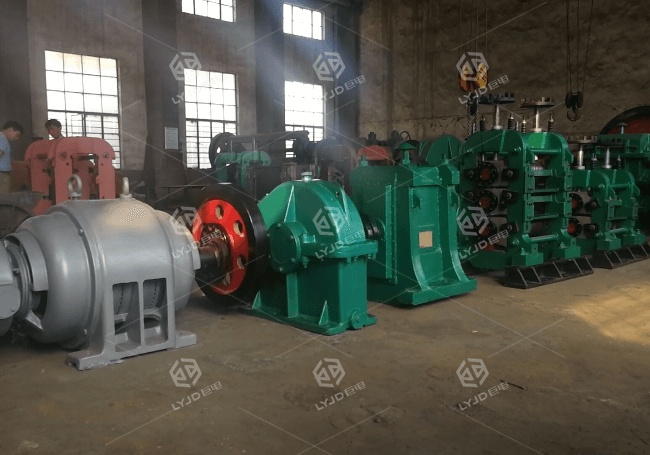Today we come to discuss with you some knowledge about rolling line and continuous casting machine.
Compared with traditional die casting, the use of continuous casting machine can simplify the production process and shorten the process flow. The continuous casting process eliminates the processes of demoulding, moulding, soaking of steel ingots, and blooming.
As a result, the capital investment can be saved by 40%, the floor space can be reduced by 30%, and the labor force can be saved by about 70%. The appearance of thin slab continuous casting machine further simplifies the process flow.
The weight of the hot rolling equipment is reduced by 30%. The production cycle from molten steel to sheet is greatly shortened. Traditional slab continuous casting takes about 40 hours, while thin slab continuous casting is only 1 to 2 hours.
Using the die casting process, the cutting head and tail loss from the molten steel to the slab can reach 10% to 20%, while the loss of the cut head and tail in continuous casting is 1% to 2%, so the metal yield can be increased by 10% to 14%. %.
If calculated by an increase of 10%, a steel mill with an annual output of 1 million tons of steel can increase the output of 100,000 tons of steel by using the continuous casting process.
For the flow from molten steel to sheet, the metal yield was 93.6% with conventional casting and 96% with thin slab casting. A steel mill with an annual output of 800,000 t of steel can produce an additional 24,000 t of hot-rolled coil if it adopts the thin slab continuous casting process. The economic benefits brought are considerable.
The use of continuous casting saves the reheating process of the soaking furnace, which can reduce the energy consumption by 1/2 to 1/4.
According to relevant information, in the production of LT billets, continuous casting can generally save 400-1200MJ of energy compared to die casting, which is equivalent to saving 10-30kg of heavy oil fuel.
If the continuous casting slab adopts the hot feeding and direct rolling process, the energy consumption can be further reduced, and the processing cycle can be shortened. The time from molten steel to rolled finished product along the process is: cold charging 30h, hot charging 10h, direct rolling 2h.
In the process of steelmaking, die casting is a labor-intensive process with harsh labor environment. Especially for the development of oxygen converter steelmaking, die casting has become the limiting link for improving productivity.
After continuous casting, the labor environment has been fundamentally improved due to the improvement of equipment and operation level and the use of whole-process computer control and management. Automation and intelligence of continuous casting operations have become a reality.
However, from the current situation, continuous casting cannot completely replace the production of die casting, because the characteristics of some steel grades are not suitable for the production method of continuous casting, or it is difficult to ensure the quality of steel when using continuous casting.
Therefore, it is still necessary to retain some of the production methods of die casting, and while vigorously developing continuous casting, continue to attach great importance to die casting production and strive to improve the quality of steel ingots.
Luoyang Judian is a manufacturer of rolling steel production equipment. You can follow us and communicate with us if you have any questions.

Please send us your request and we reply to you with in 24 hours.
Submit Request